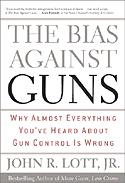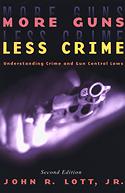Another successful 9/11-type attack would make it very difficult to again restore travelers’ faith in security and probably destroy the airline industry. Last week’s cancellation of six Air France flights from Paris to Los Angeles made it clear that such a threat remains very real. Intelligence reports indicated that at least one of the would-be hijackers was trained to fly a plane.
Unfortunately, the European response has been slow. A year ago British transportation secretary Alistair Darling announced that trained sky marshals “will be deployed where appropriate,” but it was not until this past Sunday, just one day before the U.S. ordered foreign airlines to use air marshals, that any deployment was actually announced. While almost all other allies will follow along, with the possible exception of Sweden, they gave what has been described as a “frosty reception” to U.S. plans.
Given European governments’ past heavy reliance on screening passengers and strengthened cockpit doors, sky marshals are a good start toward preventing terrorism, but they are not enough. Consider the following:
-
Screening is hardly perfect. While many focus on the knives, box cutters and long scissors that all too frequently make it through security, the problem is even worse: no matter how carefully screeners monitor X-ray machines and metal detectors, many weapons are essentially undetectable without a full-body search. For example, there is no way to detect ceramic or plastic knives that are taped to an inside thigh. On Tuesday, a dead stowaway was found in the wheel-well of a British Airways flight from London to New York.
-
Reinforced cockpit doors are now in place, but because of engineering constraints few experts have much faith in their effectiveness. Last summer, on a bet to test the doors’ strength, an overnight cleaning crew at Dulles Airport near Washington, D.C., rammed a drink cart into one of the new doors on a United Airlines plane. The door reportedly broke off its hinges. The doors for European airlines generally provide even less protection.
When screening and reinforced cockpit doors fail, armed marshals can help prevent hijackings. Bill Landes of the University of Chicago found that between one-third and one-half of the reductions in hijackings during the 1970s could be attributed to two factors: the introduction of armed U.S. marshals on planes and the increased ability to catch and punish hijackers.
The U.S. experience can provide Europeans with some valuable lessons on the limitations of armed marshals. To effectively cover most flights today, the marshals program in the U.S. would cost $20 billion per year. Only a small fraction of flights to Europe have marshals and then only one day a week.
A cost-effective additional layer of security is to let pilots carry guns.
There are many concerns that have been raised about letting marshals or pilots carry guns, but armed pilots actually have a much easier job than air marshals. An armed pilot only needs to concern himself with the people trying to force their way into the cockpit. The terrorists can only enter the cockpit through one narrow entrance, and armed pilots have some time to prepare themselves as hijackers penetrate the strengthened cockpit doors.
Pilots must also fly the airplane, but, with two pilots, one pilot would continue flying the plane while the other defended the entrance. In any case, if terrorists are in the cockpit, concentrating on flying will not be an option.
 An oft-repeated concern is that hijackers will take the guns and use them against the passengers. Opponents in the U.S. note that police are sometimes killed with their own guns. Yet, in 2000 in the U.S., where police always carry guns, 33 out of nearly 700,000 police full-time officers were killed with a handgun, and only one of these firearm deaths involved the police officer’s own gun. Statistics from 1996 to 2000 show that only 8/1,000ths of 1% (that’s 0.008%) of assaults on police resulted in them being killed with their own weapon.
An oft-repeated concern is that hijackers will take the guns and use them against the passengers. Opponents in the U.S. note that police are sometimes killed with their own guns. Yet, in 2000 in the U.S., where police always carry guns, 33 out of nearly 700,000 police full-time officers were killed with a handgun, and only one of these firearm deaths involved the police officer’s own gun. Statistics from 1996 to 2000 show that only 8/1,000ths of 1% (that’s 0.008%) of assaults on police resulted in them being killed with their own weapon.
The risk to pilots would probably be even smaller than for marshals. Unlike marshals who would have to physically subdue terrorists, pilots would use their guns to keep attackers as far away as possible.
 The fears of bullets damaging planes are greatly exaggerated. As Ron Hinderberger, director of aviation safety at Boeing, testified before Congress: “Commercial airplane structure is designed with sufficient strength, redundancy, and damage tolerance that a single or even multiple handgun holes would not result in loss of an aircraft. A bullet hole in the fuselage skin would have little effect on cabin pressurization. Aircraft are designed to withstand much larger impacts.”
The fears of bullets damaging planes are greatly exaggerated. As Ron Hinderberger, director of aviation safety at Boeing, testified before Congress: “Commercial airplane structure is designed with sufficient strength, redundancy, and damage tolerance that a single or even multiple handgun holes would not result in loss of an aircraft. A bullet hole in the fuselage skin would have little effect on cabin pressurization. Aircraft are designed to withstand much larger impacts.”
Arming pilots is nothing new. Until the early 1960s, American commercial passenger pilots on any flight carrying U.S. mail were required to carry handguns. Indeed, U.S. pilots were still allowed to carry guns until as recently as 1987. There are no records that any of these pilots (either military or commercial) carrying guns have ever caused any significant problems.
 Putting sky marshals on a tiny percent of the planes is better than doing nothing, especially since they will be targeted on planes where we have some intelligence that an attack may occur. But do we really want to rely on advance intelligence to know which planes to guard?
Putting sky marshals on a tiny percent of the planes is better than doing nothing, especially since they will be targeted on planes where we have some intelligence that an attack may occur. But do we really want to rely on advance intelligence to know which planes to guard?




